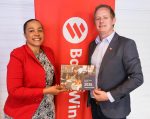THE national weighted average house price ended the year 2021 at N$1 181 225, down from N$1 240 943 in 2020, the FNB residential property price index reveals.
The index posted a 12-month average growth of 7.1% at the end of 2021 from 10.4% at the end of the prior quarter and 4.6% over the same period of 2020.
Similarly, the 12-month average growth in respect of the volume index ebbed to 6.6% from 21.7% a year ago. Although the price index growth remains relatively robust by annual comparison, waning transaction volumes are causing the average house prices to dip.
“The recent strength in the housing index growth which was short-lived, is associated with the aggressive interest rate cuts that started in early 2020 at the start of the Covid-19 crisis. The cumulative reduction in interest rates stimulated a strong surge in home buying. Tied to this, the negative economic impact of Covid-19 pandemic had also increased volatility on the supply of housing transactions due to forced sales,” says Frans Uusiku, FNB Namibia Market Research Manager.
However, these cyclical forces appear to have dissipated, as the real estate market reshapes, along with the reopening of the economy and resumption of a tight monetary policy cycle. Simply put, we are starting to see a return to a somewhat “normalized” positioning of the real estate market as the rental market continues to pick up steam.
In effect, the FNB residential rental index for the fourth quarter of 2021 posted a smaller contraction of 0.7% – highlighting a significant improvement when compared to a contraction of 2.1% recorded a year earlier. In view of Angola being an important fraction of Namibia’s property market development, the rise in global oil prices are likely to improve economic prospects in that jurisdiction, resulting in a probable return of Angolans’ leisure and educational travels to Namibia. That, coupled with the expected rebound in domestic economic activity are likely to be the key tailwinds for the Namibia property market in the short-to-medium term.
However, the observed volatility in the overall housing index also appears to highlight the high sensitivity of the Namibian residential property market to interest rates adjustments. This could be justified by limited affordability scope – with households’ debt to disposable income estimated around 89%. In essence, lending institutions are skating on thin ice from an affordability perspective, as the ultra-low-income market struggles to find affordable housing stock. Yet, this market is estimated to account for 70% of the total addressable market in Namibia. Suffice to say, the rise in interest rates present a critical risk factor for the development of Namibia’s real estate market, if not cushioned with increased public and private sectors’ spending towards land servicing and subsequently scaling-up the stock for affordable housing (below N$500K).
“The issue of rising inflation has been talked about since early 2021 when the impact of Covid-19 on global supply chains started to become evident and inflation expectations began to build. Several central banks across the world started to raise rates towards the end of 2021, including the South African Reserves Bank and subsequently the Bank of Namibia in early 2022. We believe these developments are already starting to affect investors’ thinking on where to place their capital in 2022 and beyond, as evidenced by waning deal flow in the recent months,” adds Uusiku.










